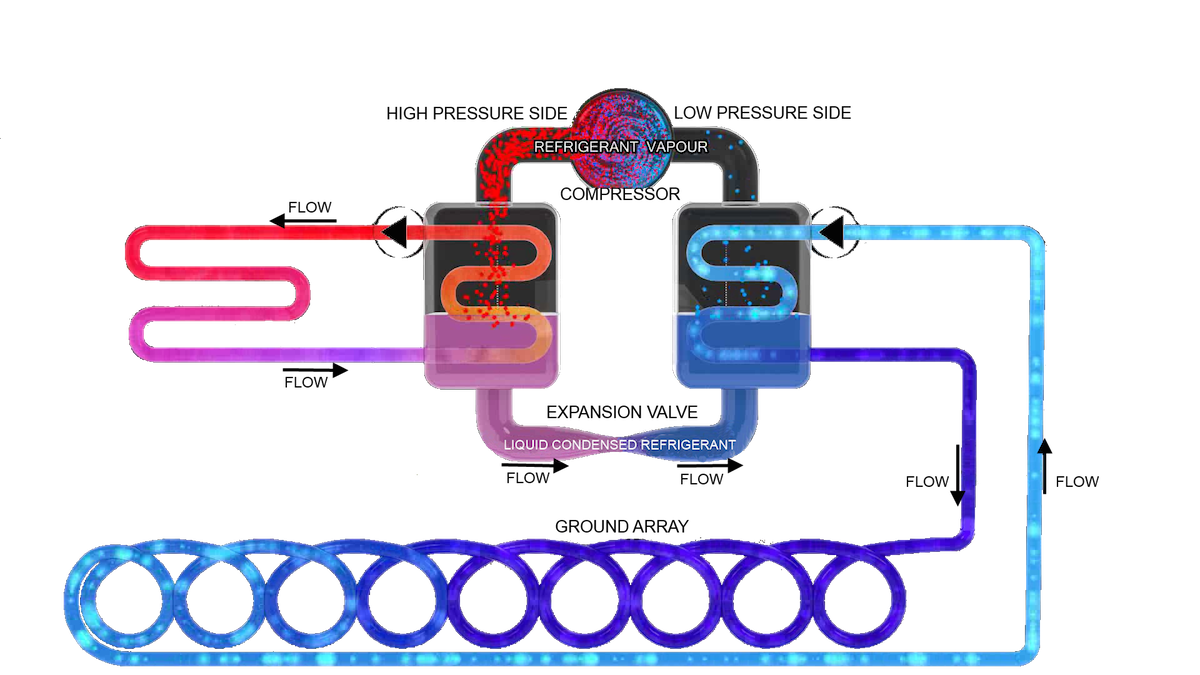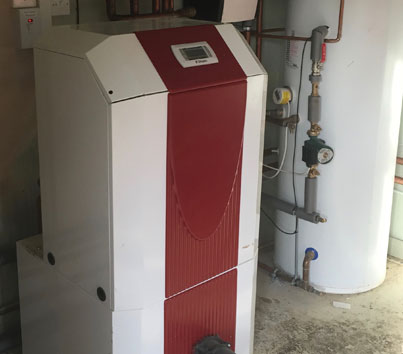Ground Source Heat Pumps use conventional refrigeration technology to extract the sun’s energy stored in the ground all year round, and raise it to a temperature suitable for heating purposes.
To extract this energy, ground collectors consisting of
flexible pipes are
buried in the earth. A mixture of water and anti-freeze is then circulated through
the pipe loops, absorbing the heat energy and transferring it to the heat pump.
At just 1m below the surface, earth provides a stable source of heat throughout the year. Ground Source Heat Pumps are able to provide high levels of efficiency for space and water heating even at sub zero temperatures.
Ground Source Heat Pumps can be used in existing homes, refurbishments or new homes. Combining heat pump installation with renovation work can reduce the overall cost of installing the system in an existing property.

The ground stores an enormous amount of energy from direct sunlight and rain. This gives the ground below surface, a year round temperature of around 8-12ºC.
Since the source of heat is free, Ground Source Heat Pumps can reduce energy costs, especially when compared to oil and LPG heating systems, plus they’re virtually maintenance free.
Heat pump efficiency is measured by the Seasonal Coefficient Of Performance (SCOP), which is the ratio between the amount of heat delivered and the electrical power consumed by the compressor. With conventional boilers, 1 unit of energy provides less than 1 unit of heat. However with a Ground Source Heat Pump, the conversion of renewable heat into useable energy means that for every unit of electrical energy, up to 4 units of heat are produced.
The running costs and savings will vary depending on a number of factors, including the size of your home, your current heating fuel and how well your home is insulated.
Ground Source Heat Pumps are typically located inside the home in a utility room, adjoining garage, or outbuilding. Heat pumps also provide hot water, which is stored in a cylinder inside the home.


The land area required is dependent on the capacity of the heat pump and the conductivity of soil in which the pipes are buried.
For medium to large gardens or paddocks, horizontal ground collectors of coiled pipes called slinkies are buried in trenches. The trenches are around 1metre wide and 1 metre deep and spaced approximately 5m apart. The number of trenches depends on the heat demand of the property. The trenches can start up to 50m away from the heat pump.
If land space is limited ground collectors can be installed vertically in a borehole, drilled up to 100m deep in the ground. However this technique is more expensive. Multiple boreholes are commonly used in large installations where very high levels of heat extraction are required.
Copyright © 2025 Renewable Force Ltd